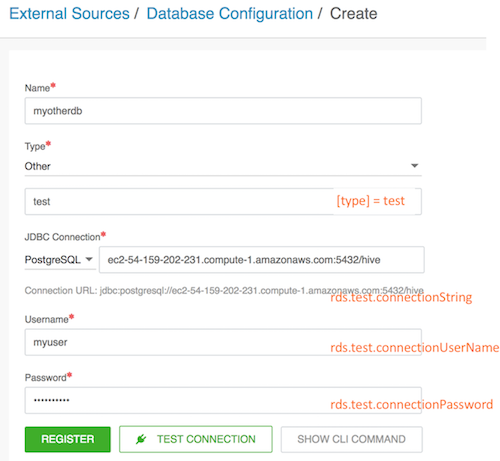Example 2: Other type
In this scenario, you start up with a special blueprint including JDBC property variables, and Cloudbreak replaces JDBC-related property variables in the blueprint.
- Prepare a blueprint blueprint that includes property variables. Use mustache
template syntax. For
example:
... "test-site": { "properties": { "javax.jdo.option.ConnectionURL":"{{{rds.test.connectionString}}}" } ... - Register an existing external database of some “Other” type. For example:

-
Property variable Example value rds.hive.connectionString jdbc:postgresql://ec2-54-159-202-231.compute-1.amazonaws.com:5432/hive rds.hive.connectionDriver org.postgresql.Driver rds.hive.connectionUserName myuser rds.hive.connectionPassword Hadoop123! rds.hive.subprotocol postgres rds.hive.databaseEngine POSTGRES
-
- Create a cluster by using your custom blueprint and by attaching the external database configuration.
- Upon cluster create, Cloudbreak replaces JDBC-related property variables in the blueprint.

